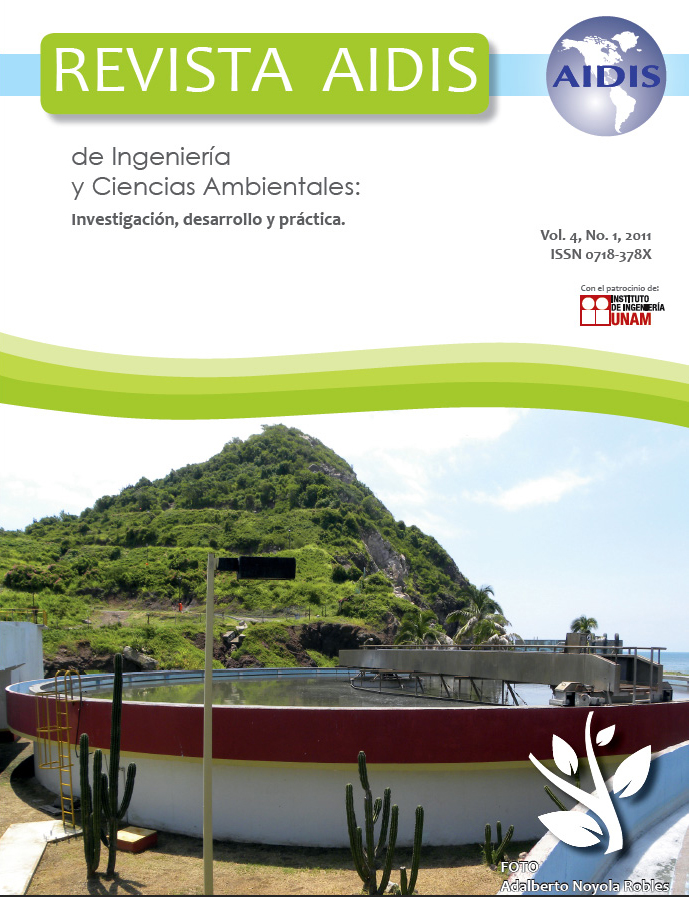ARSENIC REMOVAL FROM DRINKING WATER WITH IRON SPIKES, COMMERCIAL FIBER, GRAVEL AND SAND
Main Article Content
Abstract
This study evaluates the efficiency of arsenic removal using two commercial materials of iron nails and household commercial fiber filter on a bed of gravel and silica sand. Iron oxides formed and deposited on the sand are excellent adsorbents to remove arsenic in water as inorganic species, due to its high specific surface. The adsorption of each material was evaluated by continuous testing well water 0.11 mgAsL-1. The best arsenic removal efficiency was 95.45%, achieved commercial fiber oxidized with 2N hydrochloric acid, the operating time of the sand filter was 624 hours. The final concentration of arsenic was less than 0.025 mgL-1 value that complies with the Official Mexican Standard for human use and consumptionNOM127-SSA1-1994. This study provides a friendly alternative for arsenic removal because of its economic operational simplicity and ease of use for people of low socio-economic development.
Key words: adsorption, arsenic, nails, fiber.
